Boothferry
Booth's Ferry 1651. "Ferry at Booth (near Howden)", from Old Scandinavian ferja. The place-name Booth (originally Botheby 1550) was named from a family who came from one of the places called Boothby.
A Dictionary of English Place-Names, Oxford University Press


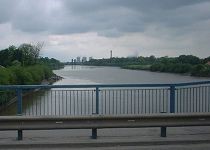
Booth village is a small collection of houses, but today it is famous for Boothferry Bridge which carried all the traffic to the coast before the M62 Ouse Bridge was opened. The derelict jetties of the old ferry and a single-storey toll house can still be seen at the end of Ferry Lane. Upstream from the toll house is a row of large poplar trees.
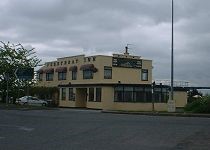
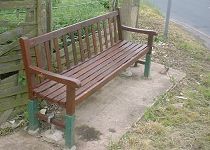
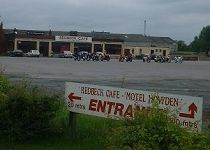
The Ferryboat Inn is the drinking establishment of the area and was a welcome relief for motorists driving back from the coast on sunny summer Sundays. The Redbeck transport cafe is similarly a meeting place for motorbikers on a Sunday afternoon and the starting point for cycling clubs heading for the Dales. Kemps's ice cream stall has unfortunately disappeared.
South of the river at the Hook/Airmyn roundabout is an innocent looking bench. Legend has it that long-running TV series Last of the Summer Wine was based around three characters who used to sit on this bench watching the world go by.
Postcards
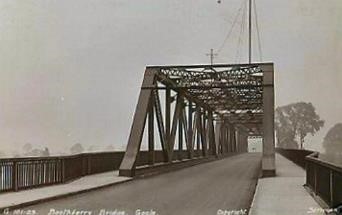
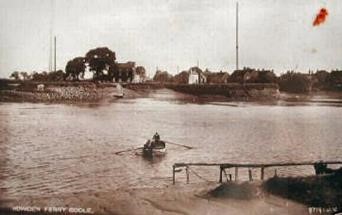
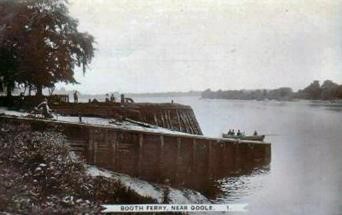
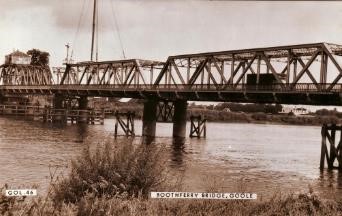

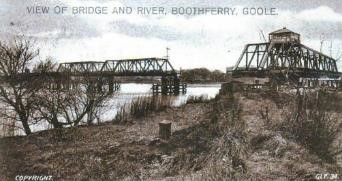
Visitor Comments
Posted by MW on 21/01/2006
IN MEMORY OF JACK ROBINSON
THE SON OF A FERRY MAN
My grandfather, Thomas Robinson, took over as ferryman at Boothferry in 1918, having worked the ferry of Howdendyke for the previous 30 years. During that time he was authorised to carry mail between the East and West Riding. He told many tales of amusing and sometimes hazardous trips. On one occasion he took a menagerie over the river and each time he took a stroke with the oar, a bear snapped at him until he was knocked out for the count with the loose tiller.
He was joined at Boothferry by his sons Harold and John Henry (known to all as Jack) when they returned from the army after World War I. They ran the ferry between them until the opening of Boothferry Bridge on 18 July 1929, which made the ferry obsolete.
They ferried the first and last motor vehicle over the river before the opening of the bridge. This could be a hair-raising experience. The cars look very precarious in the photographs. Calamities were not all that common, but drivers did occasionally continue straight across the deck of the boat and over the other side. It must have been a terrible shock for them, but I never heard of any deaths from these mistakes.
I recall several incidents such as the time when three tramps wished to cross the river, but only one could afford the fare, so he took the clothes and bags of his colleagues and they took to the water to swim across sadly one of them never made it.
On one trip Harold was taking three youths from Howden to Goole side. They were having a laugh and congratulating each other after having a meal at the Percy Arms and getting away without paying. "We dodged that old bat," they said. Halfway over the river Harold stopped rowing and shipped his oars. "This is as far as we go," he said. "Either you pay your fare now plus the price of the meal, or you get out and walk. That old bat is my mother." They paid up!
Horses could be very hard work, both loading and unloading. The horses had to be unhitched and the cart was manhandled onto the boat. There were several regular customers such as a brewer's dray loaded with barrels and a carter carrying all kind of goods. These could be very heavy. Horses were loaded separately and on several occasions a nervous horse would jump out of the boat and finish up swimming across with the driver holding his halter. The ferry was well used by farmers, pedestrians, cyclists and motorists paying 2d to 4d for a return trip.
Tom, the youngest son continued to live at Howdendyke. His wife Elsie (still doing well at 89) told me of one occasion when the two of them cycled along the riverbank to visit the family. They put their cycles in the stable next to the ferryman's cottage and were greeted with moans and curses from just above knee high. It was a legless man; he had gone into the stable to shelter for the night intending to get the ferry the next morning. I remember this character. His legs had been amputated just below the hip and he sat in a leather tray attached by leather strap like braces. In each hand he held a wooden block which he used as feet; swinging his body between the blocks he could get along at quit a speed.
Molly Robinson, a sister of the three brothers, married Bob Walker the local farmer, making one big happy family. Their sons still live at the ferry and from what I have been told and from bits I have read, I estimate the family have lived at Boothferry for over 200 years.
There used to be a quoits pitch on the bank top. This consisted of two iron cartwheel tyres set in the ground some distance apart, with a metal spike in the centre of each. The game was played with heavy iron rings or quoits. The object of the game was to throw a quoit from one end of the pitch and to ring the spike at the other end.
The ferry cottages were often flooded at spring tide, but no carpets were ruined, we only had homemade rag rugs. My most vivid memory is of the old midden. This consisted of an outside toilet with its well-scrubbed seat under which was a stone slab sloping down to a pit surrounded by a brick wall. There were two doors in the wall, one high up which all the kitchen waste and other rubbish was thrown through, and the other, a larger door, was used for digging out. Phew! I swear we had flies as big as sparrows.
After the ferry closed, Jack (my father) and Harold were employed on the new bridge. Grandad Tom continued as landlord of the Percy Arms until it closed in the early-1930s. He died on 2 February 1940. The licence of the Percy Arms was transferred to the Ferryboat Pub at the foot of the bridge approach road, Howden side, where they have a bar known as the Ferry Bar which contains photographs and artefacts of the old ferry.
In pagan times when a bridge was built, a sacrifice was made to appease the water sprites. A young virgin or a baby was placed in the foundations of the main pillar. When Boothferry Bridge was built the builders took my sister's doll and placed it in one of main pillars. Fortunately there were no babies in the area at the time.
Posted by M. Williamson great-great-grandson of John Henry Robinson (Jack)
Posted by John on 15/12/2009
There was an old coaching route (now only a lane) which ran almost parallel to the present road from Knedlington Crossroads to Boothferry Bridge at what was Kemps Cafe (now the Ferryboat Inn). George Kemp had another larger cafe built across the road from the old cafe and it was known as Mayphil cafe after his daughters Mavis and Phylis. The Mayphil thrived before the advent of the motorway took away the passing trade. This is now part of the lorry sales yard.
As a small child I used to be taken to have an ice-cream at Kemps Cafe. In the early days there was a sales kiosk in the entrance to the car park of the original cafe which became the Ferryboat Inn. This was facing the road to Knedlington but later on it was moved to be near the new Mayphil Cafe before finally settling at the corner of the Knedlington and Howden Roads.
Kemps Ices were a treat and on a warm Sunday afternoon a stream of people would walk from Goole to buy one before walking back again.
Back to Table of Contents
feedback@goole-on-the-web.org.uk